From Empire To Fall: The Development Of The Eldar Part 4
June 27, 2013 by crew
The early to mid 90s were a renaissance period for Warhammer 40K. The success of the mainstream boxed games Hero Quest and Space Crusade were to set the template for the second edition release of 40K in 1993 and each edition thereafter. The rules for this edition had slowly been evolving within the pages of White Dwarf as Rogue Trader Warhammer 40K moved away from a games master led skirmish RPG and more towards a table top battle game that could be played with just two players and a rules set. This was where I came into the hobby and I still have many fond rose tinted memories of those days which influence the narrative style of play I prefer in my games still. Though a medium sized game may have taken the same time it takes to play a game of Apocalypse now it didn’t matter.
In 1992 Games Workshop released the Warhammer 40,000 Battle Manual which was the second edition rulebook in all but name. Featuring revisions, new rules and equipment the book laid the foundation for the release in 1993 of Warhammer 40,000 Second Edition. A large box containing plastic models for opposing forces of Space Marines and Orks as well as a tree’s worth of card templates and reference cards as well as three rulebooks. Soon to follow were Codices, army books that contained everything you would need to immerse yourself in your chosen army. Background, prose, a bestiary containing all the available units, artwork, photos, painting guides, conversion tips, cut-out-and-keep reference material and to round it all off an army list were within. Each Codex was a starting point from which lifelong obsessions have grown.
Codex Eldar was not my first Codex, that was Codex Chaos. Despite this there was something about the Eldar that drew me in. One day I splurged on a boxed army and a handful of additional units to go with it. Back then White Dwarf had a miniatures catalogue at the back of each issue. You could pore over models that had featured that month and even order bits. It was these that had kindled my interest. Alongside the Eldar Codex were the Eldar forces to be found in Epic Space Marine, Games Workshop’s massed battles Warhammer 40K game.
The second edition Eldar Codex collected together the Craftworld lore that had been introduced in White Dwarf 127 and what had been written about the Harlequins. New material was written about the Exodites who had up till then only received a brief mention previously. Exodites were the first of the ancient Eldar to abandon the Eldar Empire to escape the decadence and corruption that was infecting their society. They ranged far from the Empire towards the eastern edge of the galaxy. Exodites settled mostly on Maiden worlds, those that the ancient Eldar at the peak of their power had terra-formed to be paradises. Exodite worlds remain much as they have always done, primal and lush, the Eldar there going back to a simpler way of life cultivating the land and herding animals, usually saurian of various types. Wraithbone is rare on these worlds so Exodites make use of other cruder materials for their tools so utilise forging and other crafts rather than psycho-engineering. An Exodite differs from his Craftworld brethren in that he is tougher and more straightforward. Exodites shun much of the subtlety that permeates the rest of Eldar culture.
The saurian breeds that the Exodites live alongside are harnessed in times of peace and times of war. Though they shun most technology the Exodites maintain weapons of destruction. The Exodite Dragon Knights ride to war on the back of bipedal saurian breeds. They wield deadly laser lances that unleash a single powerful laser shot before they connect on the charge. Larger saurians will carry heavy weapons on their backs to go head to head against invading tanks and the largest may even carry whole fortresses to battle.
By far the most powerful weapon in the Exodite arsenal are their Knight Titans. Knights are the smallest class of titan. With the release of the Wraithknight in the sixth edition codex these giant war machines are staging a re-emergence so do not be surprised if the Imperium and Chaos find their own knight class titans appearing in the near future! I am still waiting to see a Bright Stallion or Towering Destroyer conversion arrive. Knights were the heaviest weapon that Exodites could field though these, along with the larger saurian, could only be fielded in games of Epic.
Though Exodites did not have access to an infinity circuit to store their souls safe from Slaanesh’s predations they had something similar in the form of the World Spirit. The World Spirit takes the form of a massive worldwide psychic energy grid. It is comprised of giant crystal standing stones arranged at intervals, sometimes in complex patterns. The nexus of this grid is the royal circle of the planet’s king. As the planet itself is alive with the souls of the Exodite’s ancestors they will fight to defend it against any invader and Craftworlds are quick to send aid to Exodite worlds under invasion, particularly those of Biel-Tan who see the Maiden world colonies as the staging grounds for their race’s return to dominion of the galaxy.
Though the Corsairs once comprised the totality of the Eldar range they had become overshadowed with the coming of the Craftworld Eldar. They were not forgotten though and were now classified as Outcasts. Outcasts were just that, those who could not live under the rigid strictures of the Path and Craftworld society. They would strike out on their own and eventually gather into small groups. Some would be unable to completely sever ties of family and home and would become Scouts who in later editions would be called Rangers. They would patrol the galaxy looking for threats and reporting back to their Craftworld with any news. They were equipped with Cameleoline cloaks and sniper rifles. Blending into the background and being expert marksmen the Scouts would be the first true sniper models to find a place in 40K.
Those Outcasts that totally forsook their home would become mercenaries and pirates. These Corsairs had not changed much from their original incarnation and there was little to differentiate them from Guardians except that they would allow no other character to join their units except for their own Captain.
The ranks of the Aspect Warriors were boosted with two new Aspects. Warp Spiders were named for the psychic entities that inhabited the Infinity Circuit and who would swarm to devourer any intrusion. They wear upon their back a portable teleporter called a Warp Jump Generator. The use of this equipment was highly dangerous to the Eldar as it would propel them short distances through the Warp where they were at risk from Slaanesh. A Waystone would be no protection if it was consumed along with the soul inside. The benefits in game were that the Warp Spiders could jump through solid matter, passing through walls and any other intervening terrain with ease.
They were also armed with a Death Spinner Monofilament gun. This utilised the same monofilament wire that was to be found in the Harlequin’s Kiss except that it was spun into a web by magnetic barbs at the barrels tip. This cloud would be sprayed over and at an enemy. Those who failed to evade the cloud of razor thin wire would become trapped, their every movement causing the wire to slice them to unidentifiable mush. A more powerful version of this weapon was mounted to the Epic tank, the Doom Reaver, which itself would eventually evolve into the Night Spinner of today. The ultimate expression of this weapon would be the Engine of Vaul the Void Spinner. An aberration to the majority of Eldar this super heavy tank impregnates the monofilament web with bacteria and Wraithbone parasites that breakdown all living matter and eventually reconstitute it for use in the terra-forming of a Maiden world. Biel-Tan makes extensive use of Void Spinners especially when cleansing a world of Ork infestation.
The second Aspect unit the Shining Spears was created to utilise the newly released Eldar plastic kit of 1994 though did not receive a model until the third edition Eldar Codex. The Eldar Jetbike is a model still in circulation in 2013! The Shining Spears were akin to fantasy knights armed with Laser Lances the same as those used by the Exodite Dragon Knights. They received a relatively small introduction and you could be forgiven for forgetting they were even in the book. They received no art and not even a vehicle datafax which was the norm for bikes of all races.
Spirit and Ghost Warriors received new models and a consolidated background. Spirit Warriors were reclassified as Dreadnoughts. They bore the Waystone of a powerful deceased hero of the Eldar. They did not receive a new model though the existing model received re-sculpted arms and backpack. The smaller head of the Spirit Warrior was retired and the many different marks of Dreadnought was stripped down to the one which had two powerfists and a heavy weapon. Dreadnoughts of this era could be armed with a D-Cannon, a gun which tears a hole in reality leading to the madness of the Warp and spelled doom for pretty much anything it hit. With a two in three chance of instantly killing anything and an inversion table which described how far along, above or beneath the ground the target ended up if it did survive, this was my load out of choice after obtaining a D-cannon from GW mail order. Today you can only make use of this somewhat less terrifying monster by using a Wraith Seer from Forge World.
Ghost Warriors were reincarnated as Wraithguard, more resilient but no longer stealthy. Similar to Dreadnoughts though smaller they still towered over regular infantry. They were armed with a Wraith Cannon which was a more compact D-cannon, not something to be ignored! The D-cannon was to become one of the signature weapons of the Eldar. In Epic much larger versions could be found on the Warp Hunter tank, Cobra super heavy Engine of Vaul and the Phantom Titan.
Phantom Titans had appeared in a supplement article in White Dwarf for the 1st edition of Epic Space Marine released in 1989 which was the successor to Adeptus Titanicus, a game which began telling the story of the Horus Heresy for the first time and saw massive Titan war machines battle it out between hab blocks. The Phantom Titan model remains today one of the gems in the Epic range. The largest of the Eldar Titans it is almost a living creature that moves with a grace and fluidity that the lumbering machines of other races could never hope to match. The Warlock Titan was a variant powered by the souls of potent Eldar Psykers making it more than a match for any foe. Accompanying the Phantom Titan were the Revenant Titans. These scout class titans were akin to Imperial Warhounds in size but far more agile. Their jump jets would allow them to dart across the battlefield at amazing speed before laying waste to the enemy with their two pulsars, massive lasers that fired a barrage of shots that were released so rapidly they would appear as a single lancing beam.
The final new addition would be the introduction of the Phoenix Lords. They were the first Aspect Warriors and they who taught others to emulate their way of war. They travel the galaxy visiting the shrines of their Aspect upon each of the Craftworlds or appearing at times of direst need. The pinnacle of their craft they were more powerful than any Exarch and were to be feared should they be fielded in a game where characters reigned supreme. Phoenix Lords are immortal. Though many may inhabit the armour of the Phoenix Lord he or she who dons the armour becomes a part of it but unlike other Exarchs it is the original personality of the suit that is in control. A Phoenix Lord may die in battle, their armour lost for centuries awaiting an Eldar to come forth and wear it once again. Once this happens that Eldar ceases to be and instead the Phoenix Lord is reborn as they were once more.
Although they were considered to be a swift army the Eldar spent most of second edition walking everywhere. This wasn’t necessarily a disadvantage. One of the main mechanisms of 2nd ed. was modifiers. By getting behind cover or moving quickly enough your opponent had less chance of hitting you. Even a Space Marine would have trouble hitting you behind hard cover like a wall, requiring a 5+ to hit! A guardian wasn’t to be sniffed at either, a Shuriken Catapult had a 24” range, was sustained fire so had the chance to fire up to three shots and reduced a Space Marine’s armour save to 5+. Kids today are spoilt with all these three up armour saves, they don’t even know they are born!
Even though an entry existed for it in Codex Eldar and it had its own datafax card, the Vyper Jetbike would not see release for three years! Many conversions would be built in that intervening period based on the standard jetbike, though thankfully none were painted striped orange and goblin green like the first jetbike my friend Allen ever painted. It would be March 1997 that would see the release of the Vyper Jetbike and it was well worth the wait. Though a plastic vehicle kit is nothing new now back in 1997 there were no plastic Eldar vehicle kits except for the Jetbike which in 2nd ed. was a vehicle and not a special type of infantry. The Vyper was a sleek and deadly light attack vehicle that had many novel features designed into the kit. The weapon mount cradle and mount were articulated and did not need to be glued into position allowing them to move. Most striking of all was the clear canopy, an unprecedented leap forward in Citadel miniatures at the time!
It was at Games Day 1997 back when you could see what models the studio would be releasing up to a year in advance that I first clapped eyes on the Falcon Grav-Tank. Finally the Eldar had a tank and one that could transport units too! The Falcon however wasn’t a new unit. It had appeared in Epic since the earliest days but back then it resembled more of a floating brick. This new Falcon was unique. Flowing lines and elegant weaponry meant I pre-ordered one then and there and I had to wait until the new year to receive it. How is that for a pre-order window?
The Falcon was swiftly followed by the Fire Prism. This was a metal conversion kit that added a small laser emitter that sent a pulse of laser energy into a massive prism before magnifying its power. The Fire Prism had no clear predecessor from Epic and appears to have originated from the Death Stalker which used a prism to focus a D-cannon style beam. The Death Stalker would eventually also spawn the Warp Hunter, a grav-tank from Forge World which wielded a large D-cannon of its own.
These releases would round off 2nd ed. 40K for the Eldar. October 1998 saw the release of Warhammer 40K third edition and with it the greatest rules upheaval the game has ever seen. The Eldar would adapt to this new game along with everyone else as well as the subsequent editions which would settle down the mechanics introduced in 3rd and merely tweak at what already was present rather than overhaul the entire game. These years will be the focus of our next (and last) article.
Lee Trayler
Codex: Eldar Artwork by Geoff Taylor.
Supported by (Turn Off)
Supported by (Turn Off)
Supported by (Turn Off)































![How To Paint Moonstone’s Nanny | Goblin King Games [7 Days Early Access]](https://images.beastsofwar.com/2024/12/3CU-Gobin-King-Games-Moonstone-Shades-Nanny-coverimage-225-127.jpg)









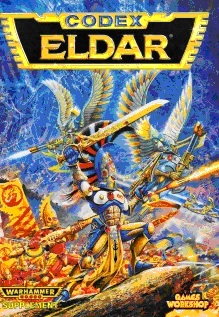

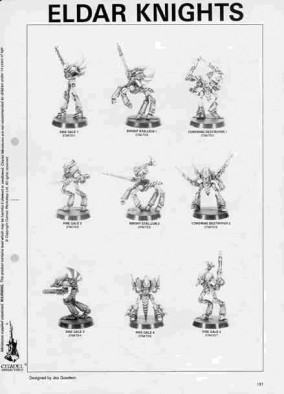
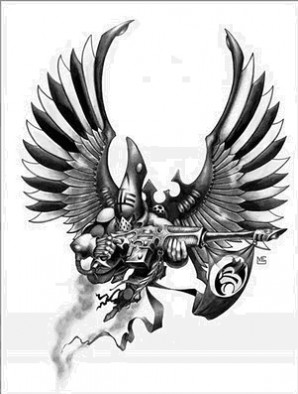
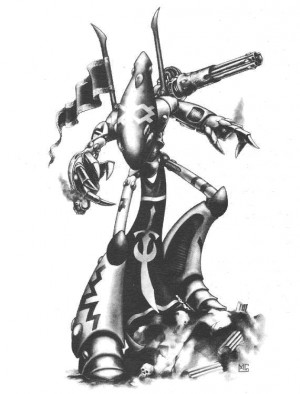
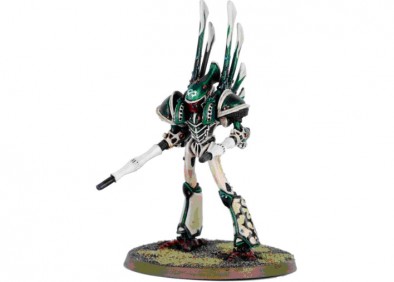
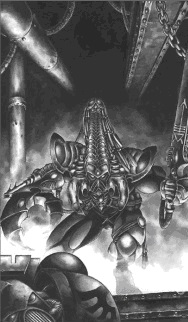
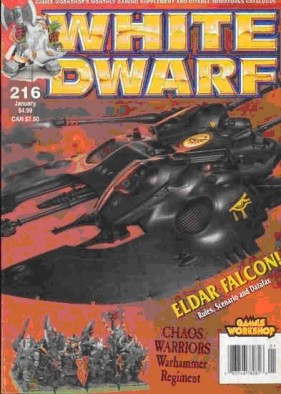
































Ahh memories, those were the days of hit modifiers, save modifiers and wargear cards, great days 😀
It was a shame (for me) that 3ed edition put me off 40K and I moved to WarHammer as teh Eldar were such fun to play.
Ah, those were the days of Glory for Eldar. But our rule on the table found it’s end, as did our rule of the galaxy. I always thought that, as we never recovered from the fall of 2nd ed., with 3rd ed. GW wanted to make sure that Eldar players could relive the fall and decline of the Eldar.
AND change the customer base to young teens in order to increase sales. 😉
I don’t think RT was as much a GM-driven skirmish game as the article makes out. The rulebook might make it look like that but in my experience it was most often played as a straight up wargame like it is now (except with fewer minis). 2nd ed was the last edition of 40K I played with any regularity and I mainly ran an Eldar army at the time. The swtich in style after the management buy-out killed most of my interest in the game though and I’d stopped before 3rd ed hit.
Still got a flyer from gamesday 1997, 16 years is a long time to have a flyer up on a pin board. 3rd edition also saw then end of squats 🙁
More like the last rites. The minis were discontinued before 2nd edition although there were still some rules for them till 3rd.
Some? There was a whole section in the rulebook, fluff and all. It was in one of the books supplied with the 2nd ed boxset 🙂
I think you misinterpret my meaning when using “some”. Which is my fault for not being clearer. I meant in the sense of “There are some rules for Squats in 2nd ed” rather than “the Squats only get some rules in comparison to other armies”. The main I was trying to make was that the minis had been discontinued several years before 2nd ed came out.
Shame really :/
Lee, thank you for your articles, its nice to relive the memories. I still have my Space elves which I am now updating to play against my son’s Tau.
About the Eldar Jet bikes I think you didn’t mention the first Elder jet bikes from 1988, which the current model is strongly based upon. Also not for getting the weird laughing God’s Harlequin jet bike and dreadnought.
Anyway good work, Neill
The 2nd Ed big box was my starting point in WH40K – I had been a Titan Legions/Space Marine player prior to that so I knew the history.
I have not player 40K in years – too much finicky ruling and far too much cheese that, when you look at it, would be a suicide move in the real world. While the quality and variety of the GW and Forge World minis has gone up, the prices have rocketed, the rules and attitude ot some 40K fanatics annoy me and I prefer games that play faster.
the fireprism was in epic long before it had its 40k model, but looked alot differant and had crystals on the back that other fire prisms could fire into to increase the power of the shot and only put one at risk. as stated jetbikes were around long before the plastic one. eldar were also faster than marines as we actually had move stats with the fastest eldar (banshees and harlies) able to put modifiers on being hit just by running. do wish GW would bring back to hit mods and armour mods, annoying that marines get the same save… Read more »